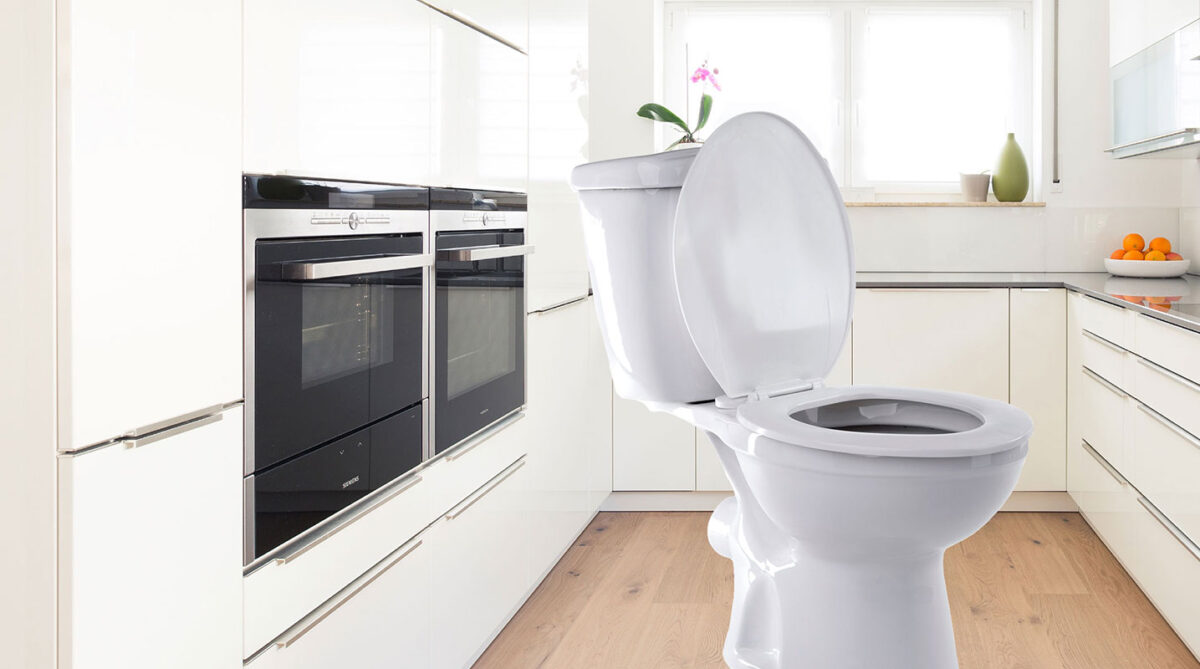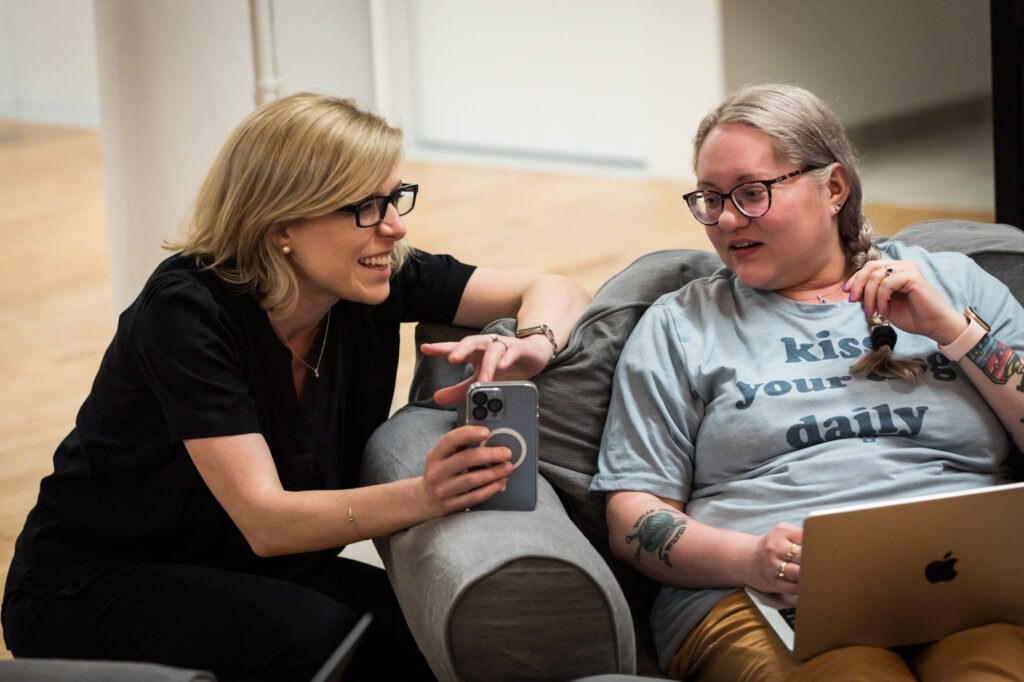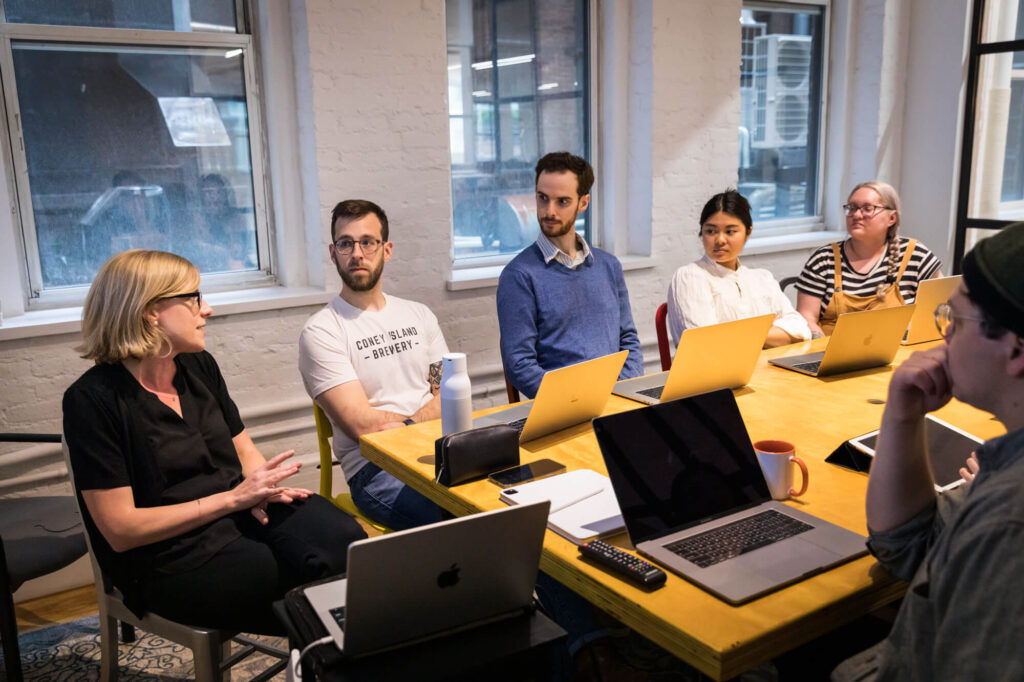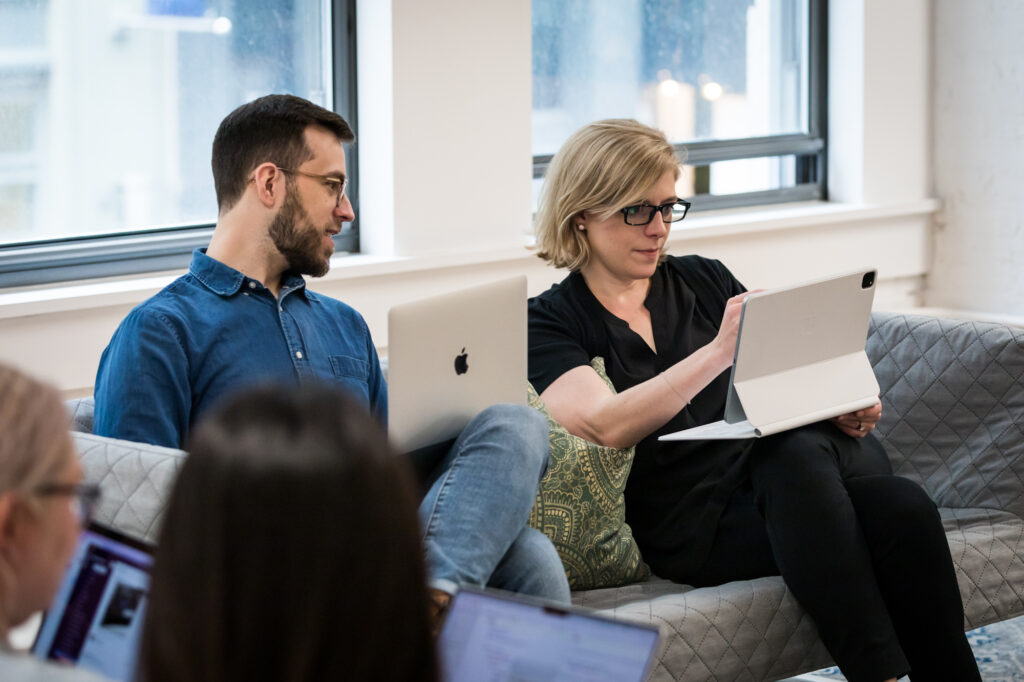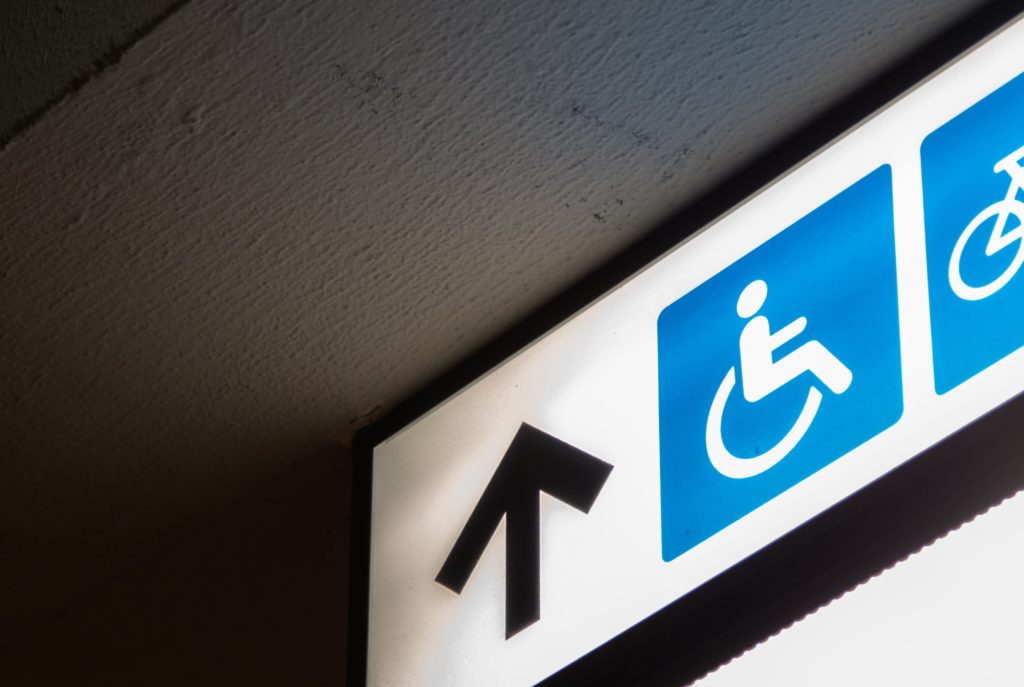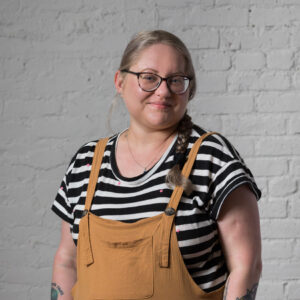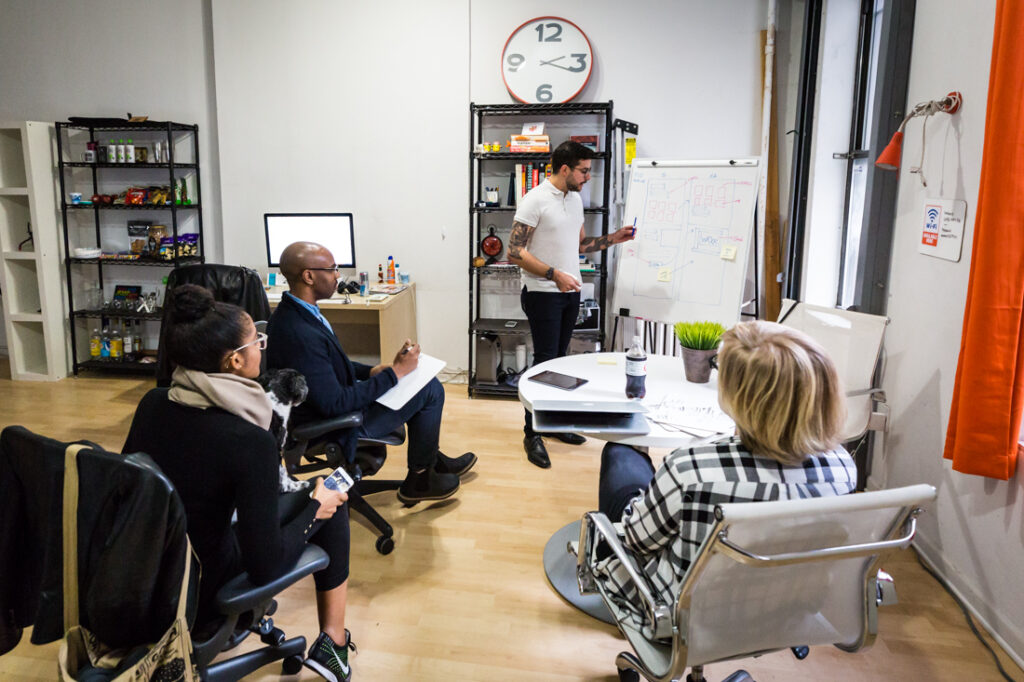I’ve always been jealous of teachers, lawyers, and doctors. They go to a bar, a party, or even home for the holidays, mention what they do, and everyone nods, understands, and moves along. This isn’t the case for UX design … “Wait, a what?”
Forget about friends and family; since leaving Google, I’ve found there to be more confusion than ever — even in the tech industry! — about the title I’ve been sporting on my business card since 2007. It surfaces when I make off-handed comments like, “I don’t care what shade of chartreuse you make the background; that’s not what I do.” The room goes silent, and the collective uncertainty is palpable. After a moment, one guy furrows his brow, cocks his head, and asks cautiously, “So wait … what do you do, then?”
I’ll tackle that guy’s question with a story.
Getting the toilet out of your kitchen
Around the time I moved into my first Manhattan shoebox, a friend of mine was paying significantly less than I for an attractive, recently renovated apartment in a hip neighborhood. It should have cost $2500 a month … and she was paying $1400. Why?
Because there was a toilet in the kitchen.
Her landlord had done his due diligence picking out an idyllic shade of eggshell for the walls, the light fixtures were right out of a CB2 catalogue, and the floors didn’t have hairs trapped in the lacquer (like mine did). But no matter how many aesthetic improvements he’d made over the years, it didn’t improve tenant reluctance about paying top dollar for an apartment with a toilet in the kitchen.
It is the UX designer’s job to make sure this doesn’t happen — but with technology instead of houses. Other team members are usually paid to prioritize other things: some will be focused on the business (“The margins will be killer if we can bulk order these kitchen toilets”), marketing types might be caught up in the positioning (“Life is easier with a toilet in your kitchen! Chop vegetables while you take care of other business!”), while the engineer is likely already engineering (“How can we connect the bathroom pipes to the kitchen in the most efficient way possible?”). It is the UX designer’s job to pause, consider the users’ experience, and ensure fundamental workflow design mistakes be avoided. She is also the one to remember that houses need doors, that the floor-to-ceiling windows would be gorgeous facing the sunset, and that the kitchen should be within earshot of the living room. She optimizes designs for people, situations, and problems.
Aren’t we all UX designers?
“Your job sounds like common sense to me. Anyone could do that.”
Pull up a chair, UX cynic — I was expecting you.
The toilet in the kitchen problem is admittedly a farcical, simplistic example. The real world is obviously more complex — and your need for a UX designer multiplies exponentially given the reality that you are often not the user.
I’d like to repeat that actually.
Your need for the UX designer multiplies exponentially given the reality that you are often not the user.
You are not the user.
Let’s extend the house metaphor. My husband and I share a two bedroom in Queens. A few months into cohabitation, he casually articulated his ongoing annoyance with the size of our closets. I’d never had a problem with this, and his comment took me by surprise. I’m also not a 6’2” male whose wardrobe is mostly comprised of broad chested suits … and I guess neither was our closet’s designer.
The versatile user experience designer — A/K/A the user experience designer you want to hire — does not design products only for herself. She is able to assume another’s vista through empathy and research, and channel her created personas to design a user flow and experience that addresses key user concerns. This might mean ensuring a nonprofit homepage includes entry points for both donors and volunteers. It might mean ensuring your click targets (that look fine on a desktop) are large enough for the smallest smartphone. Or it might mean building a page that is compatible and easy to use with a screen reader.
Where does the UX designer come from?
A myriad of backgrounds and disciplines, really. In short, being a UXer means having the gut instincts and patience to understand the user, the user’s expectations, crafting an experience (a story, really) that makes sense, and being able to sell that vision and story. It doesn’t, however, have much to do with knowing any type of specific software (just like knowing how to use Microsoft Word does not make a person a “writer”). However, because user experience designers need to understand the medium for which they’re designing, you will find many UXers that possess other toolkits (visual designers, developers, etc.).
So what does the UX designer produce?
So is that it, you ask? Does a company’s resident user experience designer just troll around the office all day, sipping a latte and critiquing designers and engineers, passionately defending the best interests of the users?
No (although that’s sometimes involved). The short answer is that the UX designer should create whatever deliverables best convey the desired workflow and ‘story’ they need to tell. However, there are a few deliverables that are common among UX ninjas — you’ll often hear “site maps,” “wireframes,” and “prototypes” referenced.
A site map shows all the pages of a website or application, and how they fit together.
A wireframe, on the other hand (according to Wikipedia), is a “visual guide that represents the skeletal framework of a website.” Early wireframes are oftentimes like the beginning stages of planning a birthday party: “I know it’s going to be a big party, at some venue in New York, and it’s going to be fabulous … we’ll iron out the rest of the details later.”
Finally, a prototype is a non-fully-functional version of a design, built for testing — either internally, or with users during usability studies.
We might mix and match these tools, and they might look nice, but it’s important to reiterate: The UX deliverables’ power is not in their aesthetic — in the same way that you wouldn’t judge the literary merit of a book by its font (even though that sexy serif might be delectable). The power of user experience (as a discipline) is to ground design and development in the user’s experience.
A final word
It’s exciting to build things quickly. I love coding all night until the sun comes up, building without a care in the world about who might want or need my creation. And it’s fun (in that geeky kind of way) to spend hours upon hours deliberating whether your website “pops” more using a serif or a sans-serif font. These things are important — but without a broader sense of your user and their experience, you might end up with a big pile of useless code and fonts.
Consequently, I would just ask that–before you put that house on the market, as you’re sanding the counters, picking out that perfect light fixture, or applying that final coat of paint–you consider calling in a user experience designer to make sure you don’t have any toilets in your kitchen.
 hi, i'm
hi, i'm 